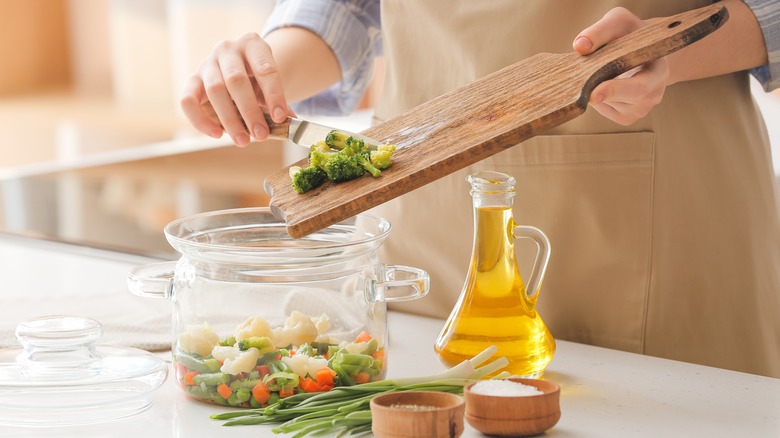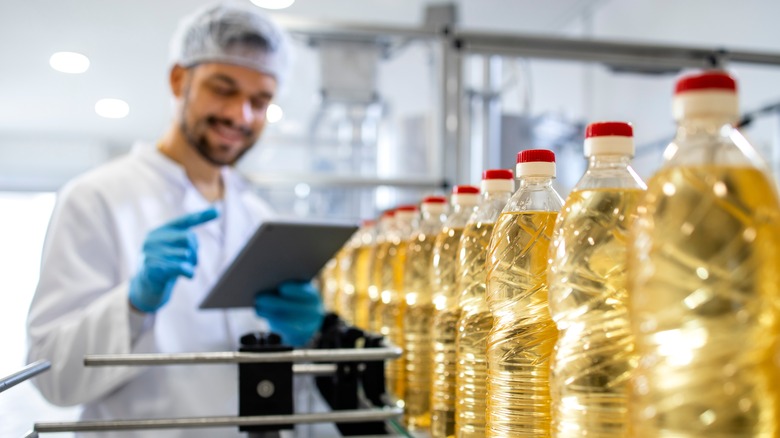What Vegetables Are Used To Make Vegetable Oil?
Vegetable oil is often the unsung hero of many of our favorite meals. The neutral flavor is perfect when you need to cook or saute something at a high heat like crispy scallops, breaded chicken, or even just regular fries. It's also the ideal oil if you're looking to create a homemade dressing or creamy mayonnaise because it has the perfect consistency and a mild taste that will let your other ingredients really shine. However, you might be wondering what's actually in the vegetable oil that you're dousing your food in.
Any oil that is derived from a plant, as opposed to an animal, can be called vegetable oil. In practice, though, about 85% of what's labeled vegetable oil in the U.S. is pure soybean oil, says Robert Reeves, president of the Institute of Shortening and Edible Oils. That's because producers wouldn't want to slap a generic label on a more expensive oil like olive or peanut.
The other 15% is likely to be a blend of soy and other oils; the ingredients (but not the exact percentages) must be listed in order of prominence on the label. These could include corn, canola, soy, peanut, olive, sesame, safflower, coconut, sunflower, cottonseed, or palm oil.
What fats are in vegetable oil and how it's made
Different formulations of vegetable oil might have slightly different ratios of mono and polyunsaturated fats, but the variations aren't large enough to affect the oils' nutritional value nor their cooking performance, says Dr. Stephen Taylor, a professor in the University of Nebraska-Lincoln's Department of Food Science and Technology.
When making generic vegetable oil, the goal is to create a flavorless, odorless, mostly colorless product as efficiently as possible. That's done using a process called solvent extraction, in which the base plant (soybeans) is ground up and mixed with a chemical solvent. The most commonly used solvent is hexane, which boils at a low temperature. The hexane dissolves the oil, then the solid plant matter is removed and the remaining mixture is heated so that the solvent evaporates, leaving behind only the oil. The oil is flavorless and odorless because the volatile compounds responsible for the taste and smell also evaporate when heated. Taylor says only trace amounts of solvent are left behind, if any.
More flavorful oils (which are also usually more expensive) are made using a mechanical, as opposed to chemical, process called cold pressing or expeller pressing. The oil sources, most often olives or peanuts, are squeezed under heavy weights until they release their oil. Since there's no heat involved, the flavor, odor, and color compounds remain.

